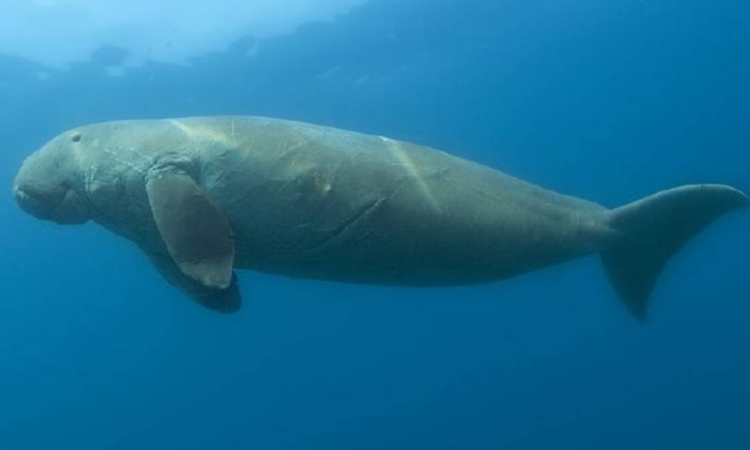What are dugongs, where is India’s first dugong conservation reserve? – The Indian Express

In the late 15th century, Christopher Columbus, sailing near the Haiti islands, wrote about a mermaid sighting. He said they “were not as beautiful as they are represented.” Little did he know that he had seen a marine mammal called the dugong, whose population is now dwindling.
What are dugongs?
The dugong (Dugong dugon), also called the sea cow, is a herbivorous mammal. They can grow upto three meters long, weigh about 300 kilograms, and live for about 65 to 70 years, grazing on seagrass and coming to the surface to breathe.
They are found in over 30 countries and in India are seen in the Gulf of Mannar, Gulf of Kutch, Palk Bay, and the Andaman and Nicobar Islands.
Dugongs are listed as Vulnerable on the IUCN Red List of Threatened Species. The loss of seagrass habitats, water pollution and degradation of the coastal ecosystem due to developmental activities have made life tough for these slow-moving animals. Dugongs are also victims of accidental entanglement in fishing nets and collision with boats, trawlers.
Internationally, dugongs are listed in Appendix I of the Convention on International Trade in Endangered Species of Wild Fauna and Flora (CITES), which prohibits the trade of the species and its parts.
Where is India’s first dugong conservation reserve?
The Tamil Nadu State government announced last week that a 500-sqkm dugong conservation reserve will soon be set up in the Palk Bay.
Government of Tamil Nadu will set up India’s first Dugong Conservation Reserve in the Palk BayDugong or the sea cow is an endangered marine species & survives on seagrass that is found in the area.The conserve will cover an area of 500 Kms #Dugong #TNForest #TNBudget @mkstalin pic.twitter.com/6V149A5OD3
— Supriya Sahu IAS (@supriyasahuias) September 3, 2021
Dr. Anant Pande, from the Wildlife Institute of India, Dehradun, and Project Scientist coordinating the CAMPA-Dugong Recovery Project, told the indianexpress.com: “We have been surveying the area and currently our rough estimates show that there are about 150 to 200 dugongs in the area. The proposed conservation area has the highest concentration of dugongs in the country.”
He added that banning trawling and gill nets in the area would be the way forward. “The local communities can continue their fishing activities in the traditional way,” he notes.
Awareness programmes are being conducted for fishing communities in the Ramanathapuram, Pudukkottai districts of Tamil Nadu. “We have even given small appreciation awards to fishermen who release dugongs that are accidentally caught. The fisheries and forest departments work together to conduct regular patrols and inspections in the region. Though dugongs used to be previously poached for meat, now with awareness, this has completely stopped. We are now working with the Wildlife Institute of India and village committees in preparing the detailed proposal for the new reserve,” said a forest ranger from the region who wished not to be named.
What made a misfit reach for the starsSubscriber Only
How Norway shaped Magnus CarlsenSubscriber Only
How young bartenders from small towns are changing the gameSubscriber Only
Record label lost Nusrat Fateh Ali Khan's music, took 35
Bachchan overshadows Prabhas in Kalki 2898 AD
Poet Jiban Narah on the need to save mother tonguesSubscriber Only
Paradise among the finest films of the year
The fight for LGBTQ+ stories in Indian theatre
All about Indian textile ikat
Why Milind Soman says that fitness is personalSubscriber Only
All about Garam masalas







